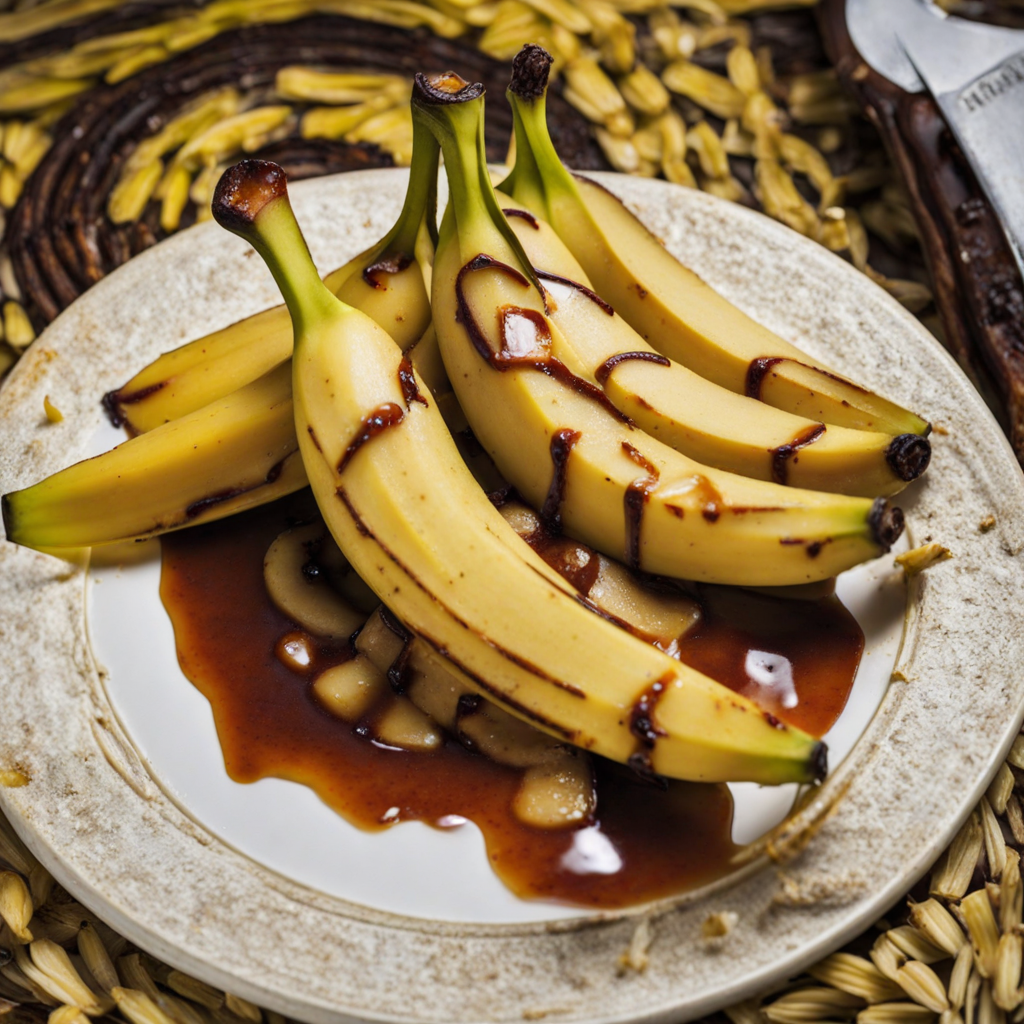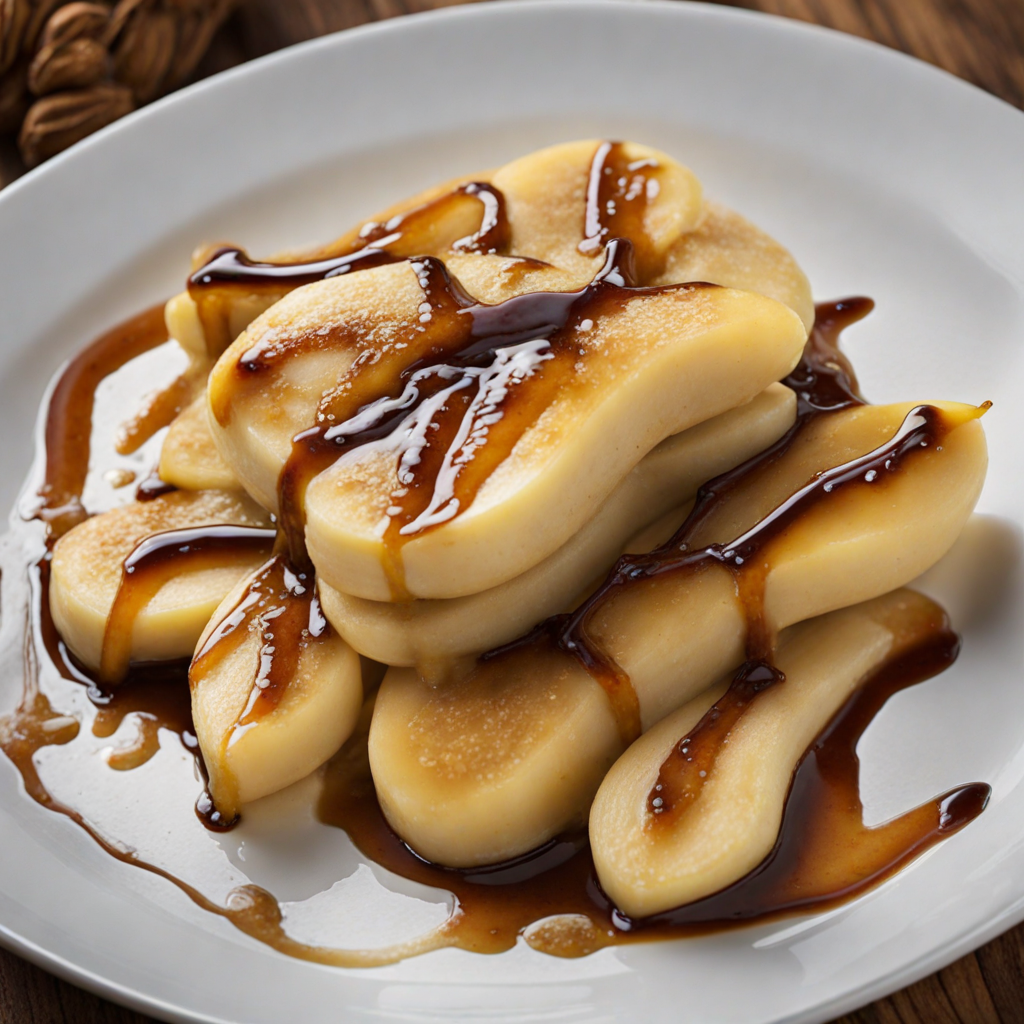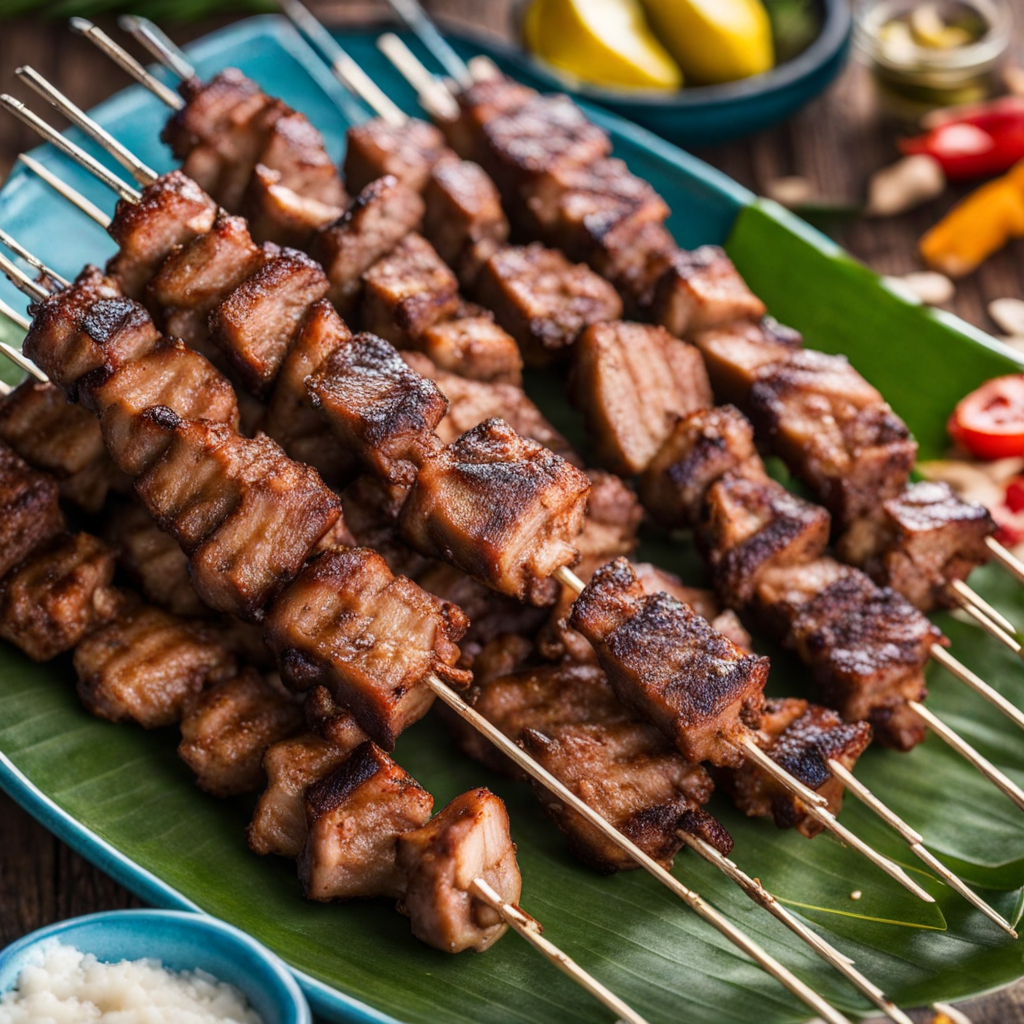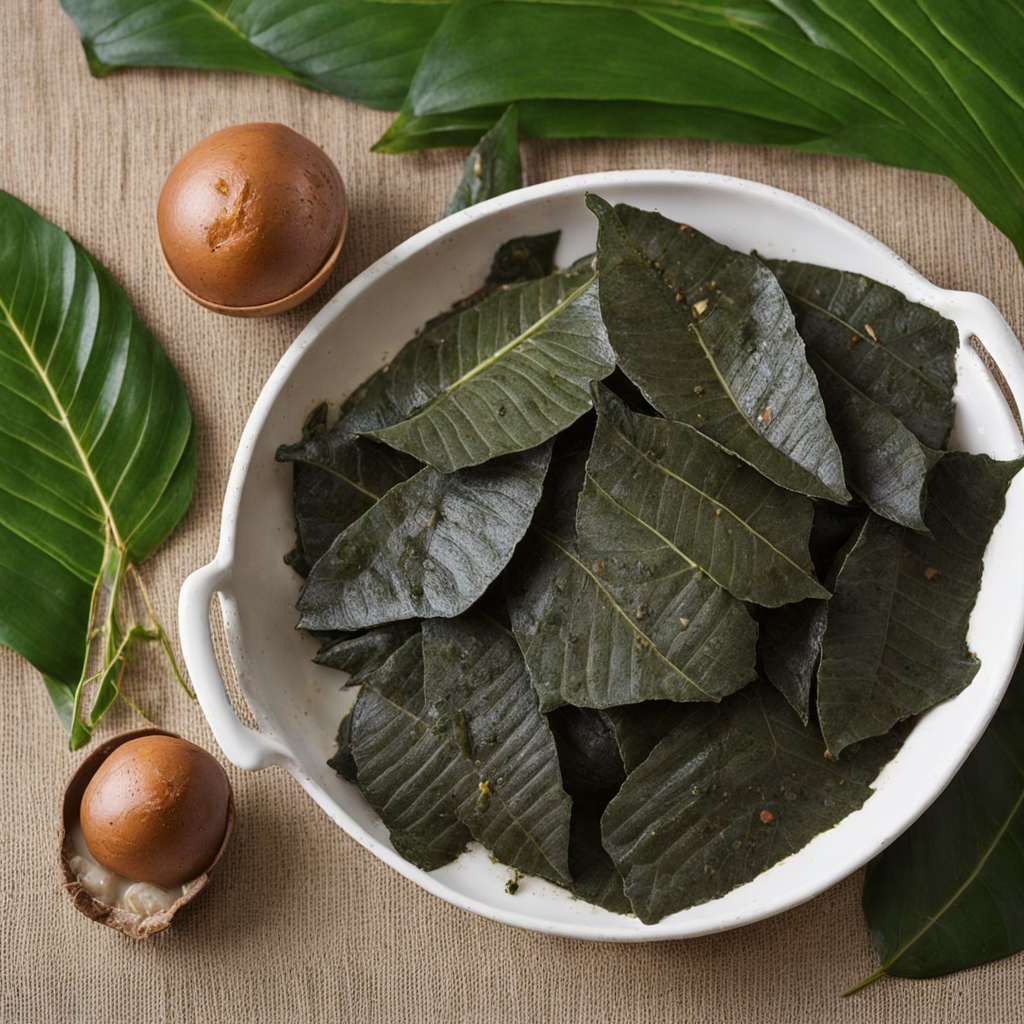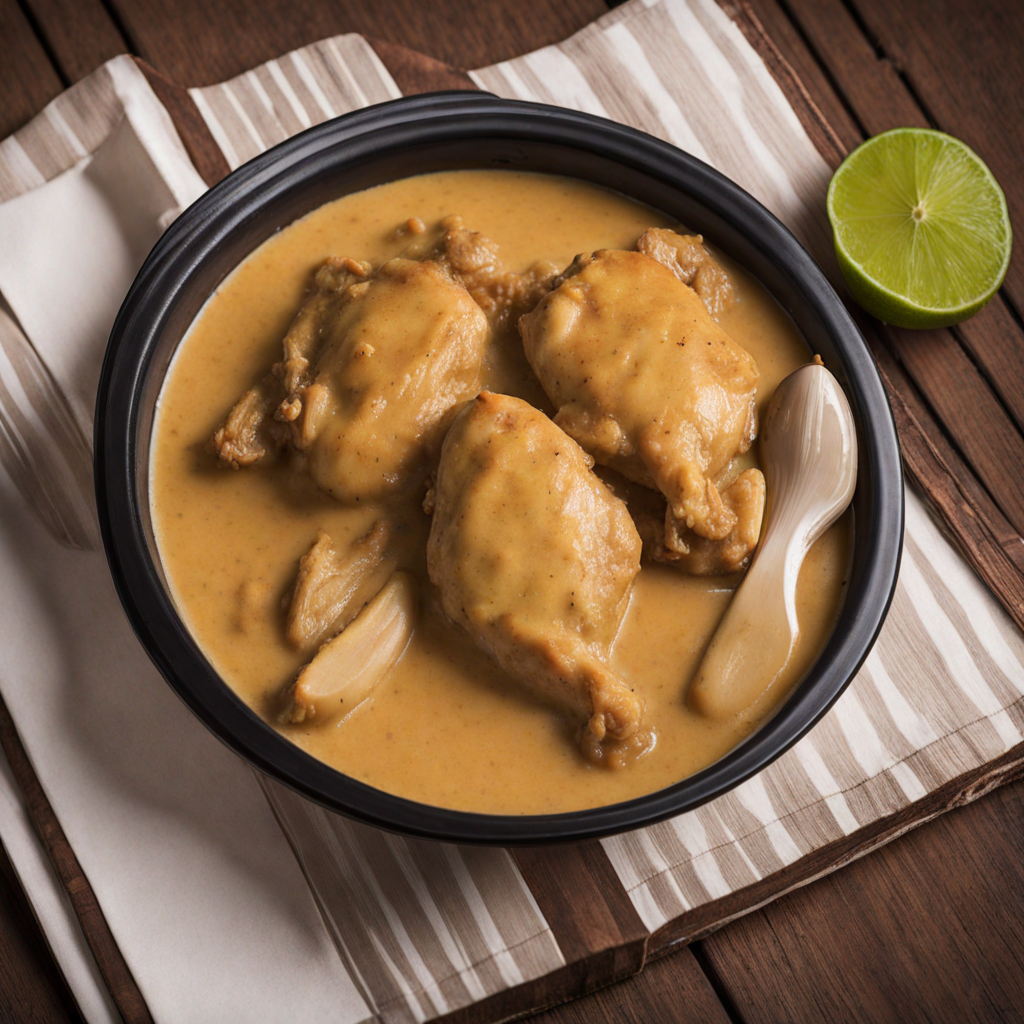Banane Flambée
Banane Flambée is a delightful dessert that showcases the rich and tropical flavors of Madagascar. The dish primarily features ripe bananas, which are caramelized to perfection, enhancing their natural sweetness. The bananas are typically sautéed in a mixture of butter and brown sugar until they achieve a golden-brown hue. This simple cooking technique elevates the fruit, creating a soft and luscious texture that melts in your mouth while providing a hint of indulgent caramel flavor. To take this treat to the next level, the dish is flambéed, often with rum or a local spirit, igniting the sugars and creating a dramatic presentation that enhances the sensory experience. The flames dance and flicker, adding a theatrical flair to the dining experience. As the alcohol burns off, it leaves behind a complex layer of flavors, marrying the sweetness of the bananas with the warmth of the spirit and the richness of the caramelized butter. Served warm, Banane Flambée can be enjoyed on its own or paired with a scoop of vanilla ice cream, which contrasts beautifully with the hot, caramelized fruit. The combination of temperatures adds an exciting element to each bite, while the creamy ice cream complements the dish's sweetness, making it a truly unforgettable dessert. It's a perfect way to indulge in Madagascar's tropical bounty and experience a unique blend of flavors that reflects the island's vibrant culinary heritage.
How It Became This Dish
Banane Flambée: A Culinary Journey from Madagascar Origins and Cultural Background Banane Flambée, a delightful dessert that features flambéed bananas, has its roots deeply embedded in the vibrant culinary traditions of Madagascar. The island, situated off the southeastern coast of Africa, is renowned for its rich biodiversity and unique cultural heritage, reflecting a blend of influences from African, Asian, and European settlers. This fusion is particularly evident in its cuisine, where ingredients and cooking methods tell stories of trade, colonization, and cultural exchange. The banana itself is a staple in Madagascar, where it is grown extensively. The island is home to numerous varieties of bananas, which are integral to the local diet and culture. In Madagascar, bananas are not merely a fruit; they symbolize fertility, prosperity, and sustenance. They are often featured in both savory and sweet dishes, embodying the island's agricultural bounty. The tradition of flambéing, which involves igniting alcohol to create a burst of flame, is thought to have originated in France. However, the technique found its way to Madagascar through colonial influence and the mingling of culinary practices. Traditionally, Madagascar has embraced the use of rum—a spirit distilled from sugarcane—as a means of flavoring and preserving foods. This local adaptation of flambéing bananas with rum showcases the island's ability to absorb and reinterpret foreign influences, resulting in a dish that is uniquely Malagasy. Cultural Significance In Madagascar, food is not just sustenance; it is an integral part of social and cultural events. Banane Flambée is often served during celebrations, family gatherings, and festivals, symbolizing joy and festivity. The act of flambéing bananas not only enhances their flavor with caramelized sugar and the aromatic notes of rum but also transforms the cooking process into a theatrical experience. The dramatic presentation of the flames captures the attention of diners, making it a centerpiece for communal enjoyment. Moreover, the dish reflects the Malagasy philosophy of sharing and hospitality. In Madagascar, meals are typically enjoyed communally, and food plays a crucial role in strengthening familial and social bonds. Banane Flambée is often accompanied by stories and laughter, as families and friends come together to savor the flavors and create lasting memories. The flambéed bananas can also be paired with other traditional Malagasy ingredients, such as vanilla, which is cultivated on the island. Madagascar is one of the world's largest producers of vanilla, and its distinct flavor complements the sweetness of the bananas, enhancing the culinary experience. This combination not only highlights the island's agricultural heritage but also showcases the creativity of Malagasy cooks who have mastered the art of infusing local ingredients into their dishes. Development Over Time As Madagascar evolved through the 19th and 20th centuries, so too did its culinary landscape. The introduction of new ingredients and cooking techniques, influenced by globalization and tourism, has allowed Banane Flambée to evolve while retaining its traditional roots. The dish has gained popularity beyond Madagascar, finding its place in international cuisine, where it is often served in French restaurants and tropical-themed establishments. In recent years, there has been a resurgence of interest in traditional Malagasy cuisine, spurred by a growing movement to preserve cultural heritage and promote local ingredients. Chefs and home cooks alike are exploring the depths of Madagascar's culinary traditions, leading to creative reinterpretations of classic dishes. Banane Flambée has benefited from this trend, with innovative variations emerging that incorporate modern techniques and presentation styles. The rise of food tourism in Madagascar has also contributed to the dish's prominence. Travelers seeking authentic culinary experiences are drawn to the island's unique flavors and cooking methods. Cooking classes and culinary tours often feature Banane Flambée, allowing visitors to engage with local culture and learn the traditional flambéing technique. This exchange not only promotes appreciation for Malagasy cuisine but also provides economic opportunities for local communities. In the context of global cuisine, Banane Flambée serves as a symbol of Madagascar’s vibrant culinary identity. It stands as a testament to the island’s ability to adapt and innovate while honoring its historical roots. The dish encapsulates the spirit of Madagascar—an island rich in diversity, creativity, and resilience—making it a beloved dessert not just in its homeland but also among food lovers around the world. Conclusion Banane Flambée is more than just a dessert; it is a culinary narrative that weaves together the threads of history, culture, and community. Its origins in Madagascar, coupled with the traditional flambéing technique, reflect a unique fusion of influences that have shaped the island's cuisine over time. As the dish continues to evolve, it remains a cherished symbol of Malagasy hospitality, celebrating the richness of local ingredients and the joy of shared meals. In a world increasingly fascinated by authentic culinary experiences, Banane Flambée stands out as a must-try dish that encapsulates the essence of Madagascar. Whether enjoyed in a bustling market, a family home, or a fine dining restaurant, it invites all who partake to savor not just its flavors but also the stories and traditions that have brought it to life. In every bite, the warmth of Malagasy culture shines through, reminding us of the power of food to connect us across time and space.
You may like
Discover local flavors from Madagascar


